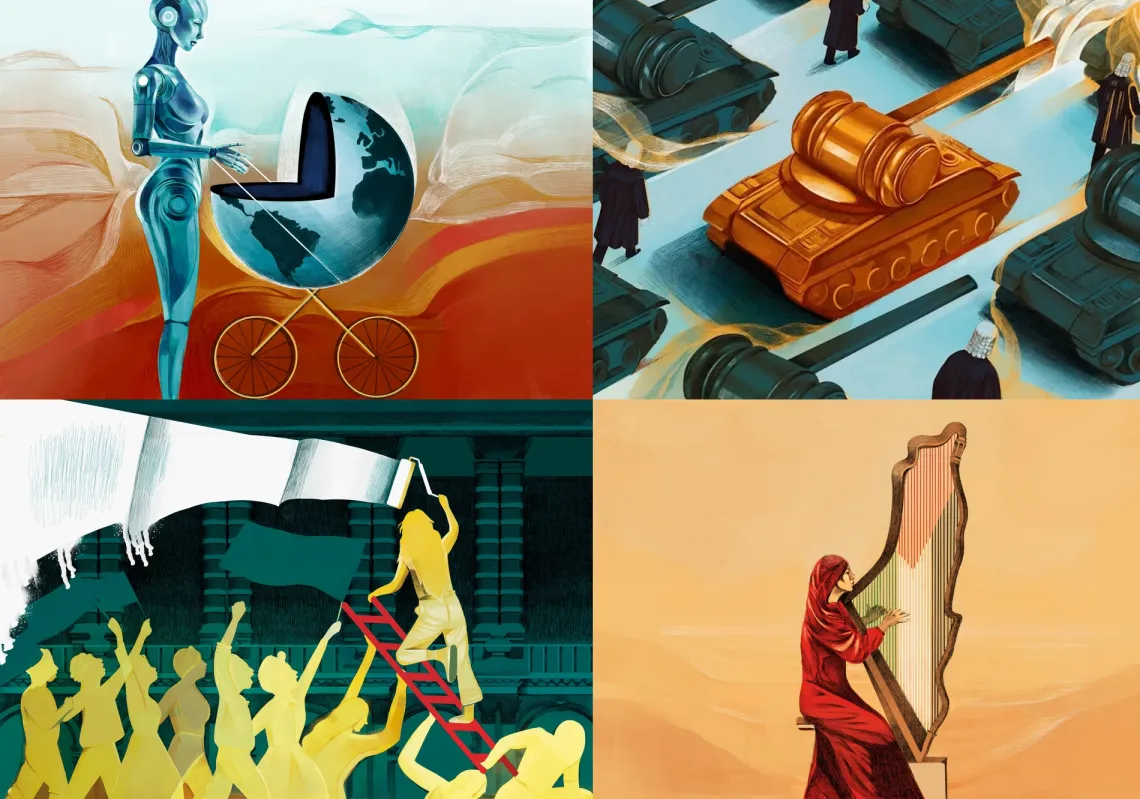Lebanon’s unique geographical location and rich social, cultural, religious, and political diversity have been sources of both its strengths and its problems. Of the two, it has undoubtedly had more problems. From the civil war in 1860-61 between the Druze and Maronites to the American military intervention in 1958 and the civil war of 1975-90, Lebanon’s diversity has also been a source of strife.
In recent decades, the country has been attacked by its southern neighbour, Israel, from the invasion of 1982 (when Israel’s enemy was Palestinian militant groups) to the July 2006 war and the war that is currently raging (when Israel’s enemy has been the Iran-backed Shiite militia Hezbollah). Each time, the cost has been greater than before.
Devastation in 2006
On 12 July 2006, Hezbollah fighters crossed into Israel and attacked an army convoy, killing three soldiers and capturing two, who they took back to Lebanon. Israel’s response was a large-scale military operation to retrieve the soldiers and to push Hezbollah away from Israel’s northern border.
This destroyed infrastructure across the country, including bridges, power stations, and Beirut’s airport and port, while chunks of Beirut’s southern suburbs were devastated. Economist Marwan Iskandar put the losses at more than $6bn. The war, which lasted just over a month, killed more than 1,100 Lebanese (mostly civilians), injured around 4,400, and displaced a million, while 20,000 left the country.
With intense fighting and Israeli bombardment still ongoing, the current campaign has already far exceeded 2006 in terms of its costs to Lebanon, both in terms of lives and in terms of the money it will take to rebuild.

Israel and Hezbollah have been trading blows since October 2023, as the latter sought to distract Israel from its war in Gaza. Lebanese Health Minister Firas Al-Abiad said 1,801 had been killed in the 12 months up to 30 September 2024. The fatalities figure includes more than 100 children and 200 women, Al-Abiad said, while 8,877 have been injured. Others are missing, presumed to be under the rubble and debris. Again, around a million Lebanese have been displaced.
Around 100,000 have left Lebanon. The Disaster Risk Management Unit said that "between 23-29 September, 36,188 Syrian citizens and 41,307 Lebanese citizens crossed into Syrian territory."
Those forced to leave their homes predominantly live in southern Lebanon and the southern suburbs of Beirut. Together, these areas constitute nearly a quarter of the country's residential population, according to Environment Minister Nasser Yassin, the head of the government's crisis management cell.
"We are facing an unprecedented humanitarian catastrophe, the likes of which have never been seen even during past wars or natural disasters," he said, adding that there was an urgent need for $400m in humanitarian assistance.
Many of the displaced are sleeping rough in public squares and on Beirut pavements. This has led to a state of chaos, with reports of riots, assaults, house occupations, gunfire, and car vandalism. Rumours and fearmongering are rife.

Looking for saviours
The army and security forces are trying to control the situation, but the circumstances are unprecedented. Riots were reported in Roumieh and Baalbek prisons, while escapes from Jezzine prison and Baalbek Courthouse prison were also reported. After the 2006 war ended, Arab and Muslim countries—including Saudi Arabia, Kuwait, Iraq, Oman, Bahrain, and Indonesia—along with some Western countries like Norway, rushed to provide aid to Lebanon and to assist in its reconstruction. Iranian aid went directly to Hezbollah, so it is difficult to gauge.
In 2024, the situation looks very different, in part because Lebanon's relations with most Arab countries are not as they once were, and in part because the state's economy was in such a dire state even before the war. Banks had halted payments and withheld deposits from Lebanese citizens, as rampant inflation had a dramatic effect on living conditions, with millions now in or near poverty. This equates to a double whammy: financial aid at the same time being both less likely and more necessary.
As the bombing continues, losses mount. Yet it is already evident that the cost of reconstruction and rehabilitation will far exceed the sums spent in 2006. Back then, Lebanon had Saudi Arabia's financial support, and the Kingdom often came to Beirut's aid. After the 2006 war, Riyadh gave an immediate $50m in emergency relief and deposited another $1bn into the central bank to shore up the Lebanese pound. It followed up with loans, grants, donations, and deposits directly and through the Saudi Fund for Development, totalling more than $4bn.











